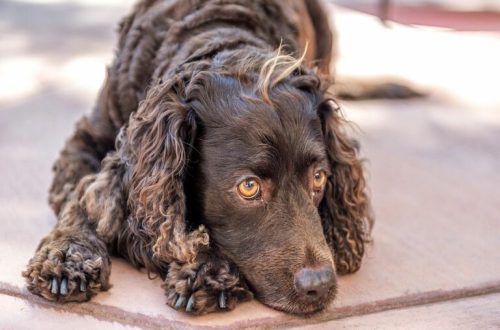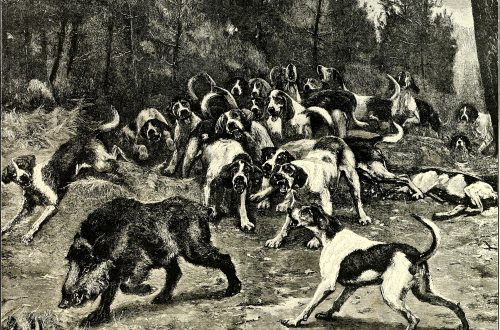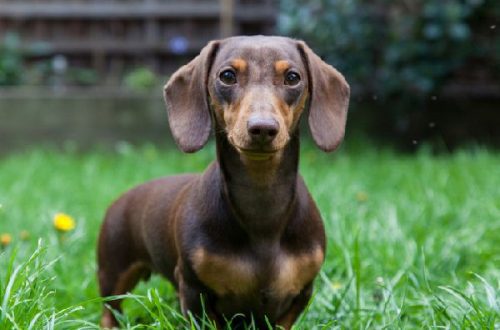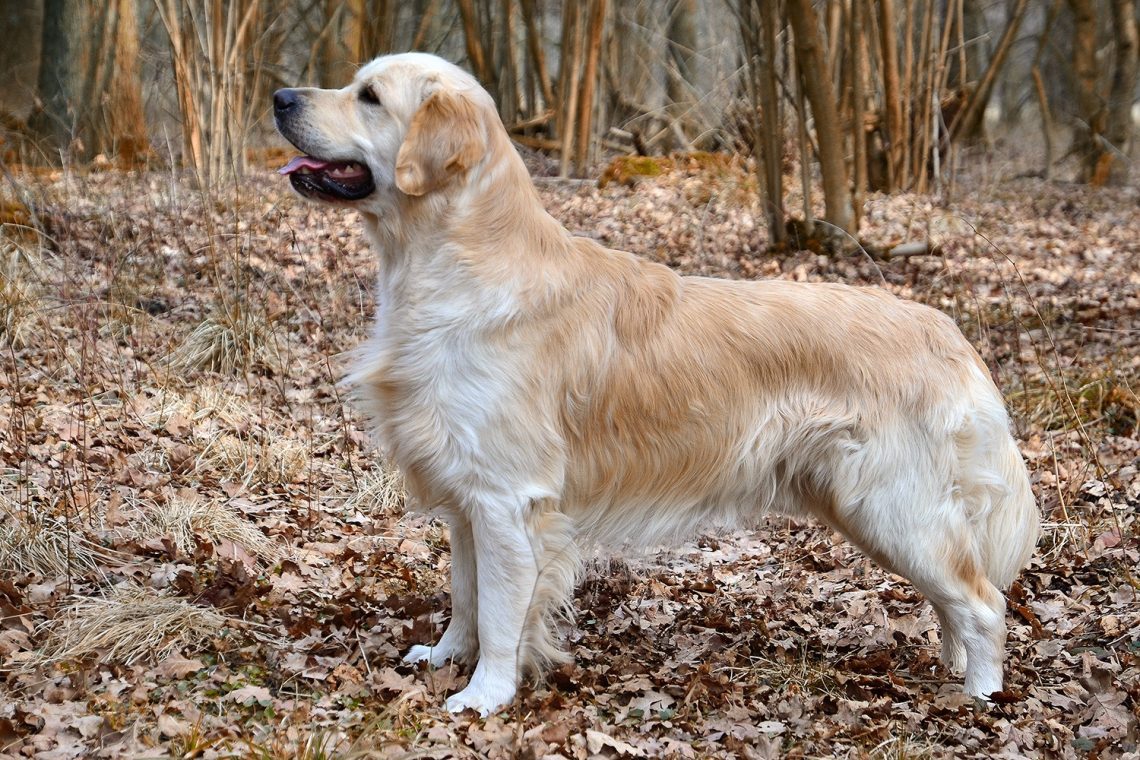
Golden Retriever
The Golden Retriever is an excellent companion and a hunter’s best friend. Good-natured, calm, superbly fetches shot game.
Contents
- Characteristics of Golden Retriever
- Basic moments
- History of the Golden Retriever
- Video: Golden Retriever
- Appearance of the Golden Retriever
- Photo of a golden retriever
- The nature of the golden retriever
- Education and training
- Maintenance and care
- Health and Disease of Golden Retrievers
- How to choose a Golden Retriever puppy
- Photo of golden retriever puppies
- How much does a golden retriever cost
Characteristics of Golden Retriever
| Country of origin | Great Britain |
| The size | large |
| Growth | 51-61 cm |
| Weight | 27-40 kg |
| Age | 11-13 years old |
| FCI breed group | retrievers, spaniels and water dogs |
Basic moments
- The ideal owners for a golden retriever are families with children, as well as active people who love outings in nature and long walks. For homebodies and adherents of a relaxed pace of life, the dog will cause more inconvenience than positive emotions.
- Representatives of this breed are quite silent and patient. They do not raise noise over trifles and do not annoy with loud barking.
- Dogs are smart and smart. Occupy 4th place in the list of the most intellectually developed breeds according to Stanley Coren.
- Among hunters, golden retrievers enjoy a reputation as the best “porters” of game, able to wade in search of prey even through difficult thickets.
- Due to the abundant spontaneous molting, the breed is not suitable for fans of sterile cleanliness and allergy sufferers.
- Golden Retrievers are capable learners, easily grasping even the most difficult material. With a timely training course, excellent guides, rescuers and search engines grow out of them.
- Despite the friendly and sociable nature, retrievers need education and a firm hand. A dog that does not recognize the master’s authority becomes uncontrollable and can create a lot of problems.
- Golden Retrievers have a real passion for water and enjoy taking baths in any open water body, and if overlooked, in puddles.
- Owners often call their pets simply golden – from the English “golden” (golden).
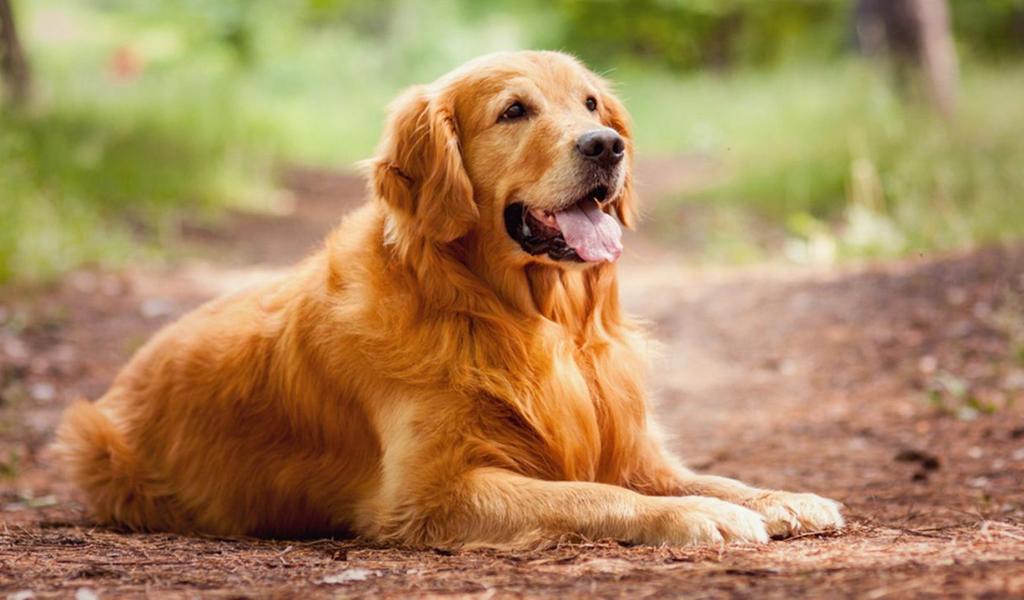
Golden Retrievers are smart hunters, impeccable family men and reliable friends, responsive to affection and a kind attitude towards themselves. A properly educated golden will willingly fulfill any master’s assignment and at the same time will not behave as if he had accomplished the greatest feat in the world. The only reward that representatives of this breed expect for their own helpfulness is simple human attention, which for retrievers is much more valuable than the most exquisite delicacy.
History of the Golden Retriever
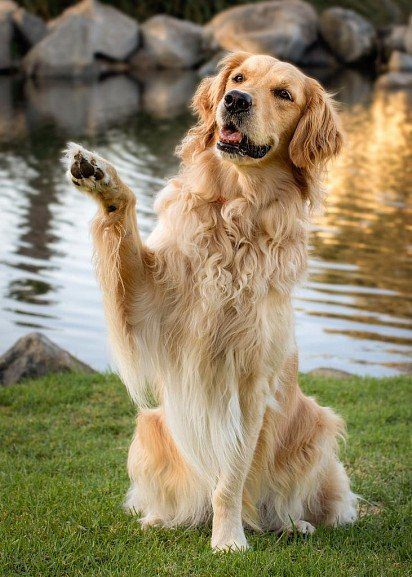
The main prerequisite for the emergence of the breed was the eternal passion of English aristocrats for hunting. In the 19th century, the main pastimes of British and Scottish Esquires were game-baiting and duck-shooting. Venerable peers disappeared for days in forests and swamps, boasting to each other about their trophies, guns and, of course, dogs. However, if the gentlemen had complete order with the hounds, then the four-legged hunters, able to find a shot quail in the heather thickets or swim after a duck that fell into the lake, were in great short supply. Commercial demand gave rise to supply, and soon shaggy dogs with an unusual golden coat color began to cut through the valleys of Scotland.
The appearance of golden retrievers as an independent breed is usually associated with the name of Dudley Marjoribanks, a Scottish lord and part-time amateur breeder. It was he who showed the world a completely new kind of hunting dog, not afraid of water and skillfully fetching a lined bird. For a long time it remained a mystery whose blood flows into the wards of the lord, until the secret records of his tribal books were made public in the middle of the 20th century. As it turned out, the Water Tweed Spaniel, Labrador , Bloodhound and Flat-Coated Retriever gave their genes to Goldens . At the same time, the first offspring was obtained as a result of mating a Tweed-Water Spaniel and a Flat-Coated Retriever, which had a yellowish coat.
By the 20s of the last century, the breed was already quite popular not only in Europe, but also among the breeders of the New World. In addition, in the USA and Canada, their own standards for the appearance of Golden Retrievers have been formed. So, for example, overseas individuals with a more intense and dark coat color were preferred.
Video: Golden Retriever
Appearance of the Golden Retriever
Golden Retrievers are moderately pumped up handsome men with a soulful look and luxurious iridescent coat. Goldens owe their recognition not so much to their own charm as to the efforts of marketers. The breed was especially actively promoted by American cinema. It is enough to watch a couple of comedy melodramas produced in the USA to understand: if an American family ever decides to get a dog, then in 9 cases out of 10 it will be a golden retriever.
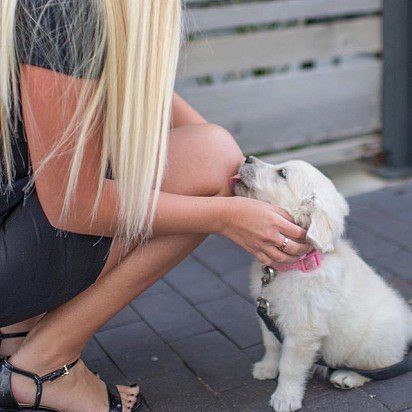
The sexual type in representatives of this breed is pronounced. The growth of the average boy ranges from 56-60 cm, and his weight can reach 41 kg. Girls are much lighter (average weight – 25-37 kg) and smaller than males (height – 51-56 cm).
Despite the existence of a single breed standard approved by the FCI, experts divide golden retrievers into three types:
- English;
- American;
- Canadian.
Representatives of the first group are natives of Foggy Albion, who have extremely massive paws and a wide skull. They differ in a lighter coat color, up to white. It is the English type that is most common in Europe and Russia. The build of the wards of American breeders is less impressive, but the Golden Retrievers “made in USA” boast a graceful posture and an overall more elegant appearance. At the same time, their coat shade is somewhat darker than that of their British counterparts. A distinctive feature of the Canadian Retrievers is a lean physique with a fairly high growth. The coat color of the “Canadians” is even more saturated and dark than that of the “Americans”.
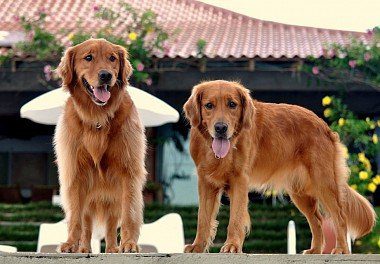
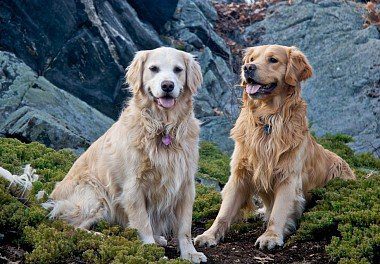
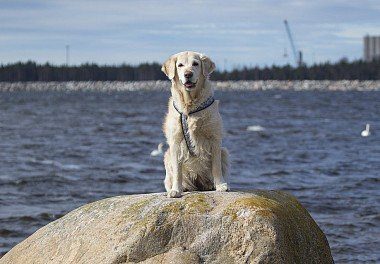
Head
The skull is massive, convex-angular. The transition from the forehead to the muzzle is distinct, smooth. The occiput is smoothed, the cheeks are flat. The muzzle of the animal is long, even, gradually tapering from the base to the nose.
Lips

Black, moderately dense and dry. The upper lip noticeably hangs over the lower, but does not go beyond the boundaries of the jaw. The lips completely hide the teeth and gums of the dog, forming small folds in the corners of the mouth.
Jaws and teeth
The retriever’s jaws are strong and fairly wide, with a pronounced scissor bite. Teeth are white and large. The incisors are located in one line.
Nose
The lobe is massive, mobile, black. Nostrils open wide.
Ears
Moderately long, drooping, hanging down along the cheeks of the animal. The base of the ear is wide, the tip is narrow, smooth-rounded. Postav – slightly above the line of the eyes.
Eyes
Large, deep-set, rounded. The Golden Retriever has an intelligent, friendly look. The color of the iris is from brown to dark brown. The eyelids are black, dry, close to the eyeball. An important condition: in a dog looking straight ahead, the whites of the eyes should not be visible.
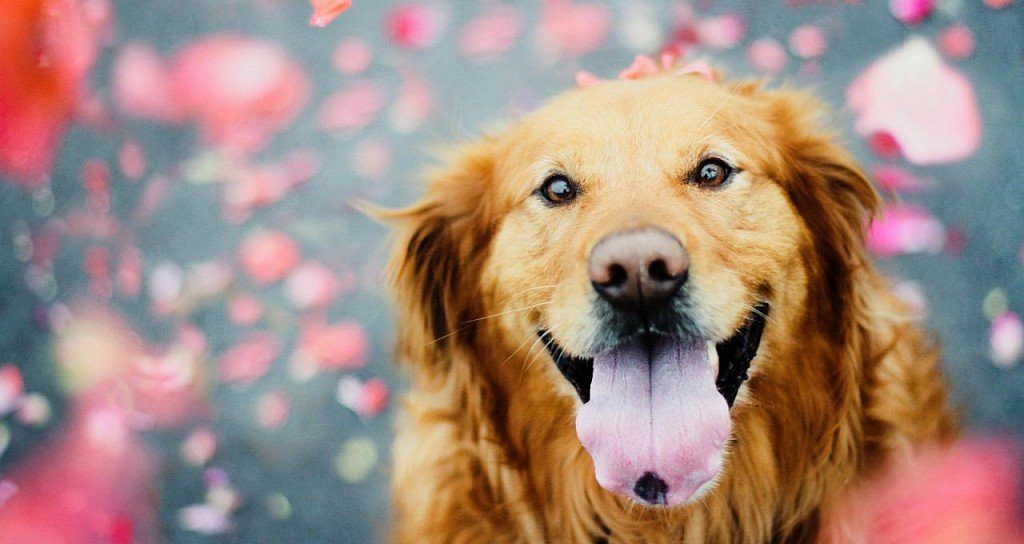
Neck
Massive, set high and of moderate length. The cervical muscles are strong, developed, there are no folds and sagging.
Frame
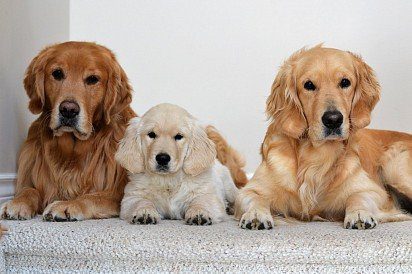
Adults have a strong, tightly knit body with prominent muscles. The back of golden retrievers is straight, with a convex loin and pronounced withers. The croup is massive, slightly sloping, rounded. The chest is of moderate width, deep enough. The tightened line of the abdomen ends with a short and well-chosen inguinal zone.
Tail
Moderately long, with a wide, thickened base and a cone-shaped tip. Located below the back. In a calm Golden, the tail is lowered; in an excited one, it is raised to the level of the back.
limbs
The forelegs are muscular, of a dry type, standing straight. The shoulders are strong, with massive shoulder blades and laid back, pressed to the body by the elbows. The humeroscapular angle does not exceed 90°. The pasterns are strong, but short, set at a slight inclination.
The hind legs are strong, with well-developed muscles, separated from each other at a decent distance. The hocks of the Golden Retrievers are low and look back. Fore and hind legs of medium size, rounded. The pads are massive, with short claws, the fingers of the animal are folded into a ball.
Golden Retriever Wool
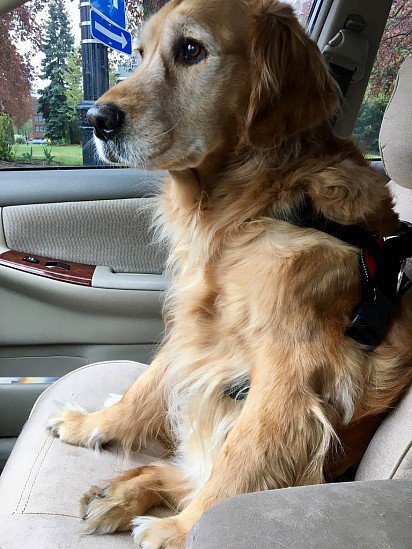
The coat of the Golden Retriever is characterized by increased rigidity and has a water-repellent function. The hair is thick enough and fits snugly to the body, hiding a rich undercoat underneath. The structure of the coat can be straight or have a light wave, and its length varies depending on the part of the body. The longest coat is located in the chest, ears, body, back side of all four legs, as well as in the lower part of the tail. The areas of the body with short hair are the head, paws and front side of the limbs.
Color
All shades of gold are considered reference, up to the transition to a cream color. Lighter colors are acceptable for the feathering on the legs and the tail feathering.
Possible vices
The list of breed defects includes any deviations from the characteristics prescribed by the standard. So, for example, it is undesirable for a golden retriever to have a sparse and long coat, white stripes on the chest, as well as too light and close-set eyes. The following vices may be the reason not to allow an animal to compete:
- square body;
- long or too short legs;
- malocclusion and skewed lower jaw;
- cryptorchidism;
- lips, eyelids and nose, painted in any shade other than black;
- white “scarf” around the neck and blazes on the forehead;
- black coat color, as well as the presence of spots on it;
- drooping tail.
Embittered or, on the contrary, cowardly individuals, animals with a small head, short ears and small teeth will also not make a serious career.
Photo of a golden retriever
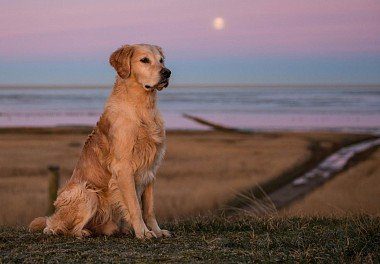
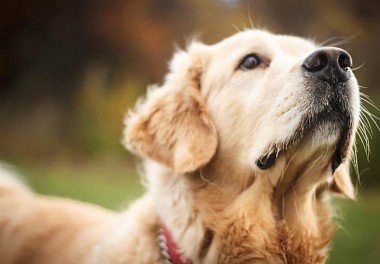
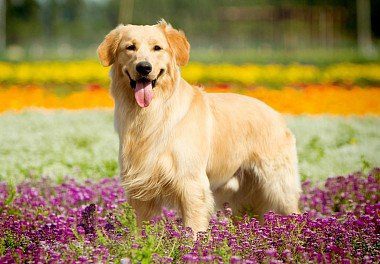
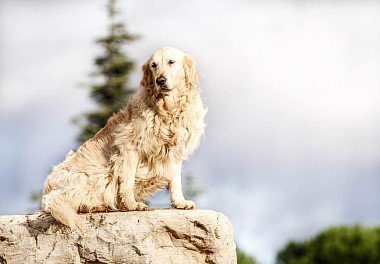
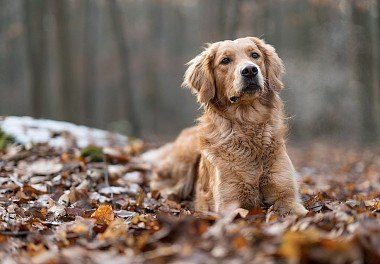
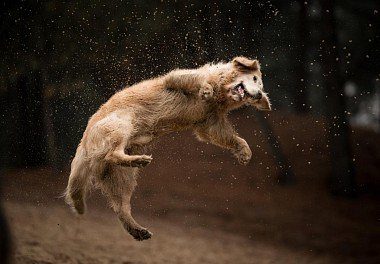
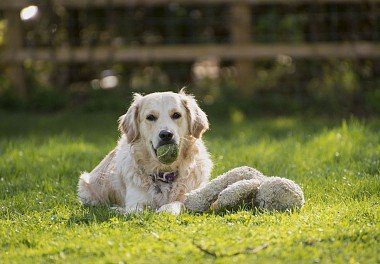
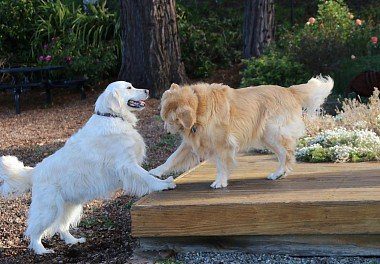
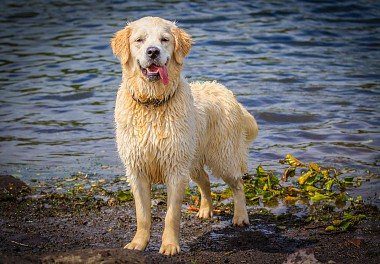
The nature of the golden retriever
In terms of the number of rave reviews from owners, Golden Retrievers are almost ahead of all breeds. Indeed, only a convinced dog-hater can unearth the shortcomings in these good-natured intellectuals. As for ordinary animal lovers, their goldens literally enchant with their softness and phenomenal memory for faces. If one of your friends treated your pet with a treat or entertained him with an unpretentious game, you can be sure that the retriever will not forget to add a fat “plus” to the karma of this friend.
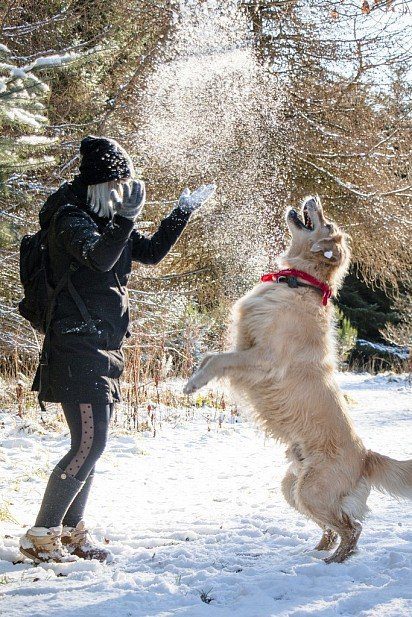
Calm and balanced in everyday life, representatives of this breed try to keep their mark even in the most delicate situations. They are completely non-conflict and are ready to get along with any four-legged creature that does not show open aggression. Even in the most tense moments, Goldens prefer to resolve the matter peacefully. A golden retriever growling and clinging to the enemy with a stranglehold is something from the realm of fantasy.
The breed is often recommended for keeping in families with children, as in relation to the younger generation, animals are as correct and patient as possible. Of course, trusting a dog with babies is not the smartest decision, but playful three-year-olds can be left to her. Golden retrievers are focused primarily on humans. It is with him that they want to go for walks, share their joys and sorrows. For this reason, goldens are often attracted to active canistherapy. Shaggy “antidepressants” are happy to contact patients who are in a state of prolonged depression, charging them with vivid emotions and gradually returning to them the joy of existence.
Golden Retrievers are typical sanguine individuals who are completely uncharacteristic of such character traits as suspicion and caution. Strangers in these rustic handsome men arouse curiosity and burning interest, so if a golden dwells in your house, come to terms with the fact that it will not work out as a guard of the territory and material values.

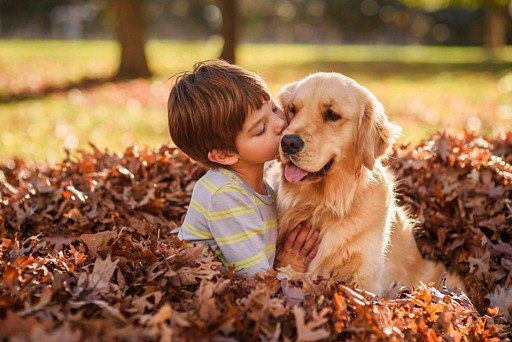
Education and training
The nature of golden retrievers did not deprive them of intelligence and memory, so the dog grasps any lessons on the fly. The first thing to start training a Golden Retriever puppy is obedience: the animal must understand what is allowed and what is not. Do not give in to the momentary desire to remove all prohibitions and pamper the baby, so to speak, as an exception. Puppy pranks will quickly cease to seem touchingly funny after a 40-kilogram dog begins to practice them.

In the first months of life, retriever babies try to taste the objects around them, so try to convey the meaning of the “Fu!” Command to the pet as quickly as possible. Those who see the future hunter in the Golden Retriever will have to go out into nature more often. A dog will be able to learn how to find and bring a lined bird only when he sees it live. At first, the skill is practiced on rags and dummies: they throw a homemade scarecrow at the puppy in order to make him want to grab an unfamiliar thing and show it to the owner. Then they smoothly move on to fetching and participating in the hunt.
Six-month-old puppies can be taught to swim and whistle submission, and it will be better if a pro does it. 12 months is the optimal age to start training your dog’s endurance, as he will often have to lie in ambush on the hunt so as not to frighten off the game. The command “Lie down!” does not apply in such cases. It is enough that the pet will sit next to you. Memory training exercises are considered very valuable, since the golden retriever is not always able to find game only by smell.
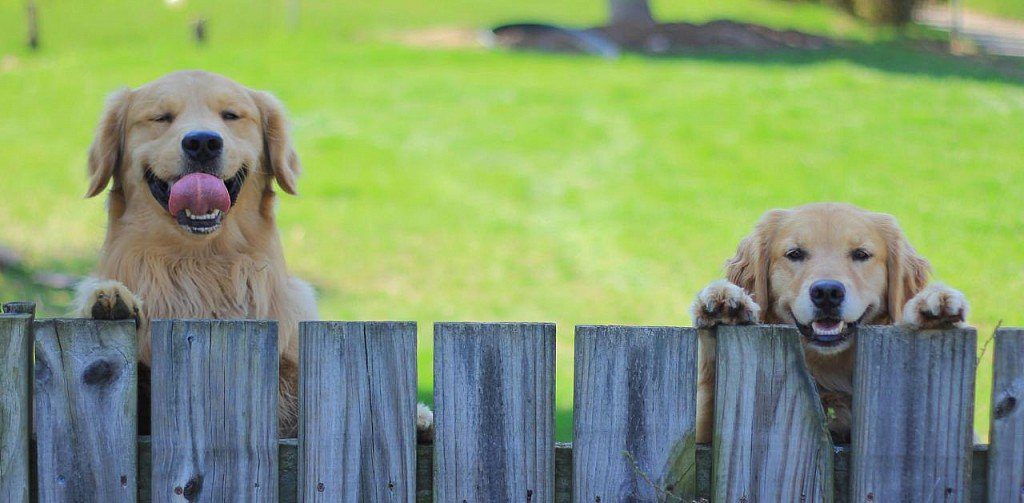
Maintenance and care

Despite the fact that the main specialization of golden retrievers has always been hunting, it is absolutely not necessary for today’s owners of these shaggy “servants” to take up a gun. Tiring races through forests and swamps can be easily replaced by long walks in parks and meadows. It’s great if you take your dog to a country house, away from the freeway, where he can run around as much as he can. Just do not try to turn your pet into a mongrel and put him in a booth: the retriever will not appreciate your impulse and become discouraged – so take the dog into the house and do not deprive him of his own company.
Keeping a golden retriever in an apartment is a kind of owner’s test of responsibility and diligence, since the lack of free space, physical activity and impressions will have to be compensated by the animal with regular promenades combined with physical activity. Due to their outgoing nature, Golden Retrievers do not handle loneliness well. Animals splash out their uncertainty and fear on surrounding objects: they gnaw furniture and wires, spoil shoes. The worst punishment an owner can come up with for a golden is to lock him up in four walls and calmly go to work. For careerists, workaholics, travelers and other busy individuals, a golden retriever as a pet is an unacceptable option.
What not to do with a Golden Retriever:
- allow children to sit on a grown dog, as the pressure created by the child’s body can cause the dog’s back to arch;
- stroking the puppy on the head and putting a collar over his head, which leads to an incorrect formation of the set of ears;
- pull the baby by the paws or try to lift it, fixing the hand under the chest.
Golden Retriever Hygiene
The main problem for the owner of a golden retriever is the coat of his pet. During the shedding period, the golden leaves fluffy marks wherever possible, and daily brushing does little to help here. There are only two ways out of this situation: do not buy a golden retriever at all, or put up with this feature of the dog and purchase a powerful vacuum cleaner to clean up the scraps after it from time to time.
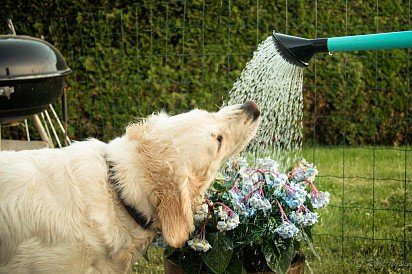
Brush the shedding retriever twice a day with a brush and mitt to collect the hair. The dense undercoat is removed with a furminator or slicker. To remove the smell of dog from wool, you can moisten it with a solution prepared according to the following recipe:
- mix a glass of water with a glass of vodka;
- add 2 tablespoons of vinegar essence;
- add 1 teaspoon of salt and shake.
In the periods between molts, the animal’s coat does not require such careful care, but a couple of times a week you still have to comb through the dog’s “fur coat”. Goldens are given a bath once a month and this is quite enough. After bathing, the pet can be slightly shortened coat. The hair is cut from the bottom up, starting from the neck. It is not forbidden to walk with scissors along the feathers on the paws, and the “panties” of the dog. The hair that grows between the toes and at the base of the tail should also be trimmed regularly.
The eyes and ears of most Golden Retrievers are unproblematic, so a standard weekly checkup is enough for them. If dirt has accumulated in the ear funnel, they can be removed with a napkin and boiled water. Chilled tea leaves are suitable for treating the eyes. Brushing golden teeth is a laborious but necessary process. If it is not possible to clean the oral cavity in the classical way, you can entrust this matter to dry food or special treats, whose hard particles act as abrasives that “erase” plaque.
Feeding
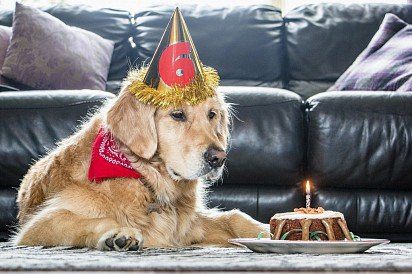
Golden Retrievers can be fed both natural products and “drying”. In the first case, about 50% of the diet should come from animal protein, that is, meat. The daily norm of the product is calculated as follows: 10-20 grams of meat per kilogram of dog weight. The remaining half of the Retriever’s daily “menu” consists of cereals and vegetables.
The meat for the dog is selected lean, with a large number of veins and cartilage. Beef, lamb, rabbit and turkey are ideal. Offal is also not prohibited, but because of the indigestion that they can provoke, they are introduced into the diet gradually and little by little.
Important: golden retrievers are fed after a walk, not before it.
It is better to cook thick porridges from rice and buckwheat, to which stewed vegetables can be added. Pumpkin, carrots, cabbage, turnips and beets are especially useful for golden retrievers. In season, early greens are mixed into the porridge. It is not forbidden to include in the diet of an adult dog fermented milk products – kefir, yogurt, cottage cheese. Puppies whose skeleton is still being formed require more calcium, so up to 4 months old milk (whole and as part of porridge) is included in the diet of small Goldens.
An approximate daily menu for a 4-month-old baby: 300 g of meat, 100 g of fruit and vegetable slices or vegetable stew (apple + carrot), 500 g of porridge in milk.
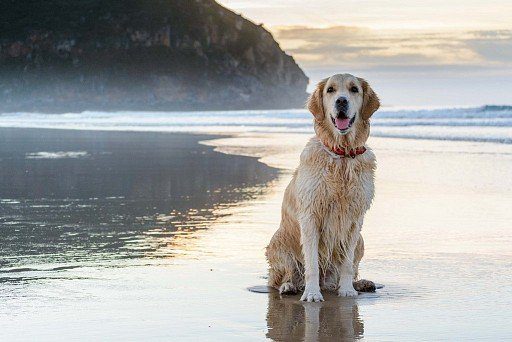
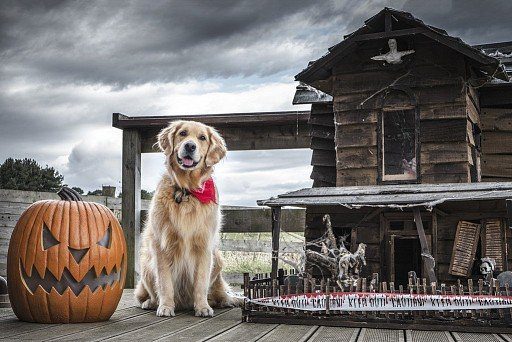
How many times to feed Golden Retriever
Up to 4 months, golden retriever puppies receive food 5 times a day. Starting from 5 months, babies are transferred to four meals a day. Six-month-old teenagers eat three times a day, and by 8 months, puppies completely switch to two meals a day.
Paddock
Walk golden retrievers for at least two hours a day. In this case, it is not at all necessary to observe the same duration of walks. For example, the morning promenade can be reduced to 30 minutes, and the evening promenade, on the contrary, can be increased to an hour and a half. If the animal lives in an apartment, then up to four months it should not be allowed to go down and up the stairs on its own. Take the puppy for a walk in your arms and bring it into the apartment in the same way.
Toddlers are taken outside more often than adults in order to develop the skill of using an outdoor toilet. At first, excursions are carried out through park areas, gradually moving to busy city streets. It is very important that the dog does not fall into a stupor at the sight of people and the sounds of public transport, so the more often it encounters the everyday phenomena of the urban environment, the faster it will learn to adequately perceive them.

Golden retrievers and water
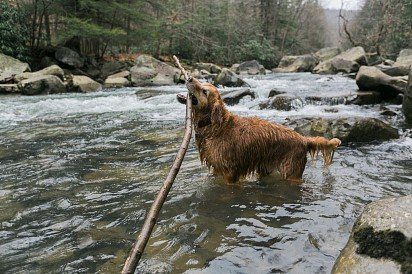
Golden retrievers love water procedures, so during a walk the puppy will certainly try to measure the depth of the first puddle that comes across. Accordingly, if you notice a pothole filled with water on the way, it is better to prevent the animal from rushing by taking it by the collar and strengthening the prohibition with the “No!” command. If the moment is missed, and the pet is already swimming in a puddle with might and main, shout at it (the same “Fu!” command will come off) and throw a leash at it. Do not climb into the water and try to pull the dog out. Wait until she obeys the command herself and praise her for obedience. But swimming in open water should not be abandoned. Swimming in a pond, river or lake for a dog is gymnastics and psychotherapy in one bottle, so when going on a weekend in nature, feel free to take a Golden with you.
Health and Disease of Golden Retrievers
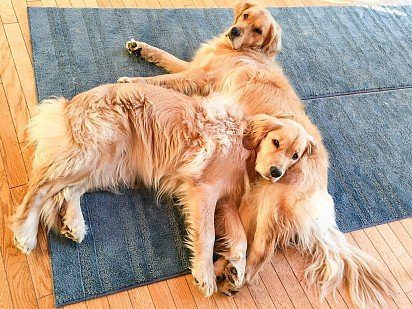
For veterinary clinics, goldens are one of the most “profitable” pets, and their owners are one of the most frequent visitors. The main diseases of the golden retriever, mentioned in almost every reference book, are retinal degeneration and hip dysplasia. However, in fact, the breed has about a dozen different ailments. So, for example, dogs are often diagnosed with oncological and heart diseases, hypothyroidism, atopic dermatitis, von Willebrand disease and other dangerous ailments.
In addition, Golden Retrievers are prone to obesity. Against the background of more serious diseases, excessive weight seems like a harmless trifle, although in reality everything is not so rosy. Animals that have worked up extra pounds live less, and overweight individuals suffer more from the constant companion of all older dogs – arthritis. A serious danger is fraught with diseased teeth of the animal. An ordinary abscess on the gum or an inflamed tooth can “spread” the infection to all the organs of the retriever, ultimately sending him to dog heaven.
How to choose a Golden Retriever puppy
- Going to the kennel, arm yourself with a printout of the breed standard, or better, take a specialist with you to help with choosing a puppy. If this is not possible, contact any of the kennel clubs, where you will be recommended a reliable breeder.
- Puppies inherit from their parents not only appearance and hunting qualities, but also a type of temperament, so when talking with the seller, insist on getting to know the mother and father of the babies. If such a favor is refused to the buyer, there is a high probability that the pedigree of the dogs is so-so.
- For those who see a future family friend in a golden retriever, it is better to acquire bitches that are more docile and affectionate. Golden males are distinguished by their bright charisma, but their character is more serious and firm. In addition, boys are much smarter in everything related to hunting.
- The temperaments of American and European Retrievers are quite different – keep this in mind when buying a puppy. Goldens from the USA are more energetic and emotional. Indigenous “Europeans” are noticeably more phlegmatic and do not sin with hyperactivity.
- Responsible breeders who value their own name have puppies well-groomed, vaccinated and treated with anthelmintic agents.
Photo of golden retriever puppies
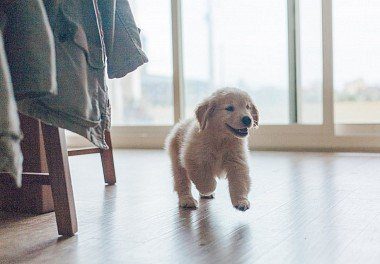
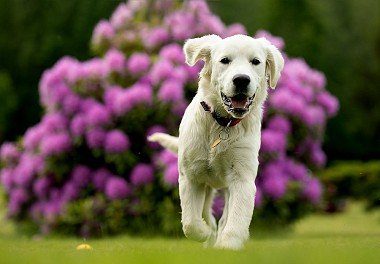
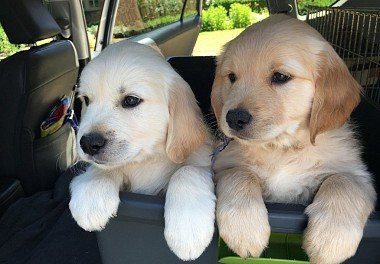
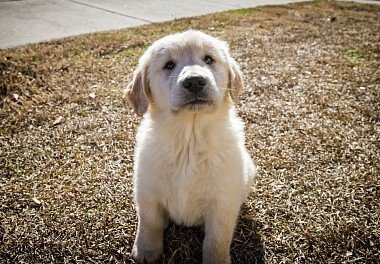
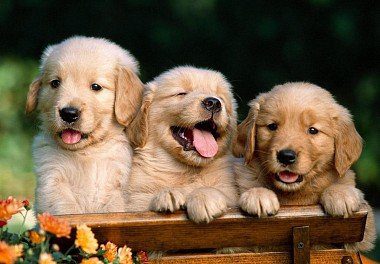
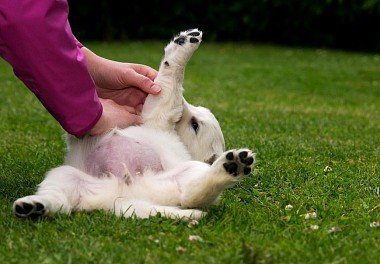
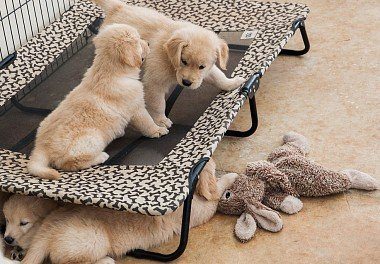
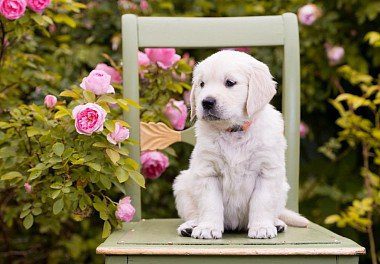
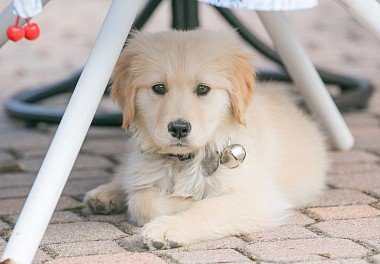
How much does a golden retriever cost
Pet-class puppies remain the most attractive option in terms of price: from 350 to 450$. Almost imperceptible to the eye defects in appearance significantly “cut” the cost of a golden retriever, which will especially appeal to those who do not dream of exhibitions and championship titles and are not averse to saving money. Prices for the show class start at 600$ and end in the region of 900$. An option designed for the most generous buyers is the offspring obtained from interbreeding, with the right to further breeding. The cost of such a puppy is 1100 – 1300$.



